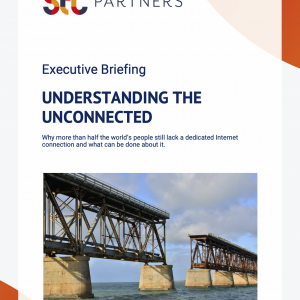Network AI: The state of the art
£1,000.00 excl VAT
Autonomous networks are still many years away, but AI-supported automation is a reality now, which all telcos must master to survive. What steps must telcos take to implement AI in network maintenance, optimisation and planning, and what is it worth?
Description
Format: PDF filePages: 53 pagesCharts: 24Author: Amy CameronPublication Date: September 2018
Table of Contents
- Executive Summary
- Making the shift from manual operations to autonomous, intelligent networks
- Recommendations
- Introduction
- Laying the foundations for AI in telecoms networks
- What counts as AI? From automation to advanced AI
- AI works at two levels for network operations
- Data: The bridge between rules-based automation and ML
- Fault detection, prediction and resolution
- What is it worth?
- How does it work?
- Real-world example of a recommendation model: AT&T Tower Outage and Network Analyzer
- Next step: From fixed to self-learning policies
- Optimising network capacity
- What are self-optimising networks worth?
- Use case overview
- How to do it
- From self-optimising to knowledge-defined networks
- AI for network planning
- Telefónica case study
- Driving automation internally versus partnering with vendors
- Reasons for developing solutions internally
- Reasons for partnering with a vendor
- Vendor profiles
- How AI fits with SDN/NFV
Table of Figures
- Figure 1: Not all AI is equal
- Figure 2: Rules-based automation versus machine learning
- Figure 3: A snapshot of rules-based automation versus machine learning
- Figure 4: Overview of automation and AI in network operations
- Figure 5: Telemetry is faster and uses less compute power than SNMP
- Figure 6: Elisa growth of automated trouble ticket handling
- Figure 7: Tupl results for automatic customer complaints resolution AI platform
- Figure 8: Implementing fixed policies for fault detection and resolution
- Figure 9: Visualisation of network alert clustering tool
- Figure 10: A self-healing network
- Figure 11: Elisa self-optimising network results
- Figure 12: Elisa maintained flat capex intensity throughout 4G deployment
- Figure 13: Finland 4G network performance, August 2018
- Figure 14: Self-organising network example use cases
- Figure 15: Numerous applications of machine learning and AI for 5G networks
- Figure 16: Break self-optimising networks down into mini loops
- Figure 17: The knowledge-defined network
- Figure 18: Facebook TCO savings over traditional multilayer planning
- Figure 19: Telefónica image recognition for network planning
- Figure 20: Ciena Blue Planet overview
- Figure 21: Google SDN layers
- Figure 22: Overview of cross-industry initiatives relating to network AI and automation
- Figure 23: Telefónica network automation roadmap
- Figure 24: Overview of SK Telecom Advanced Next Generation OSS (TANGO)
Technologies and industry terms referenced include: AI, AT&T, autonomous, Business Model, customer experience, data processing, deep learning, Elisa, fixed policies, intent-driven networks, Machine Learning, self-optimising networks, telemetry, use-case


